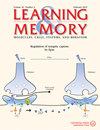蘑菇体内的感官编码和记忆:信号、噪音和可变性。
IF 1.8
4区 医学
Q4 NEUROSCIENCES
引用次数: 0
摘要
为了在不断变化的环境中生存,动物需要学会将特定的感官刺激与积极或消极情绪联系起来。它们如何形成特定刺激记忆,以区分积极/消极关联刺激和其他无关刺激?解决这个问题是昆虫大脑中的联想记忆中心--蘑菇体的功能之一。在此,我们总结了果蝇蘑菇体内感官编码和记忆的最新研究成果,重点介绍了模式分离、稀疏编码、噪声和变异性、巧合检测和空间局部神经调节等一般原理,并将蘑菇体与哺乳动物的记忆系统进行了比较。本文章由计算机程序翻译,如有差异,请以英文原文为准。
Sensory encoding and memory in the mushroom body: signals, noise, and variability.
To survive in changing environments, animals need to learn to associate specific sensory stimuli with positive or negative valence. How do they form stimulus-specific memories to distinguish between positively/negatively associated stimuli and other irrelevant stimuli? Solving this task is one of the functions of the mushroom body, the associative memory center in insect brains. Here we summarize recent work on sensory encoding and memory in the Drosophila mushroom body, highlighting general principles such as pattern separation, sparse coding, noise and variability, coincidence detection, and spatially localized neuromodulation, and placing the mushroom body in comparative perspective with mammalian memory systems.
求助全文
通过发布文献求助,成功后即可免费获取论文全文。
去求助
来源期刊

Learning & memory
医学-神经科学
CiteScore
3.60
自引率
5.00%
发文量
45
审稿时长
6-12 weeks
期刊介绍:
The neurobiology of learning and memory is entering a new interdisciplinary era. Advances in neuropsychology have identified regions of brain tissue that are critical for certain types of function. Electrophysiological techniques have revealed behavioral correlates of neuronal activity. Studies of synaptic plasticity suggest that some mechanisms of memory formation may resemble those of neural development. And molecular approaches have identified genes with patterns of expression that influence behavior. It is clear that future progress depends on interdisciplinary investigations. The current literature of learning and memory is large but fragmented. Until now, there has been no single journal devoted to this area of study and no dominant journal that demands attention by serious workers in the area, regardless of specialty. Learning & Memory provides a forum for these investigations in the form of research papers and review articles.
 求助内容:
求助内容: 应助结果提醒方式:
应助结果提醒方式:


